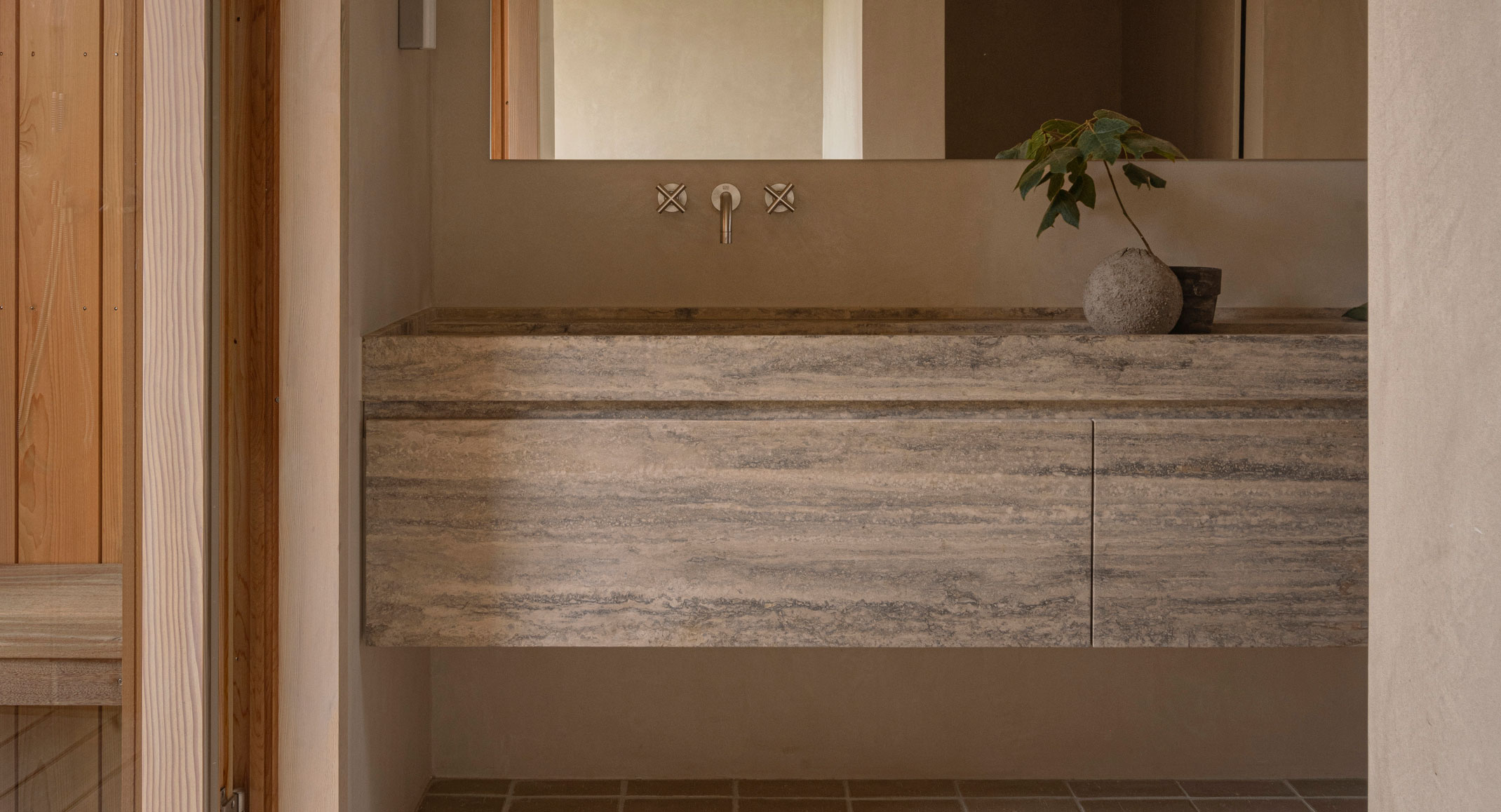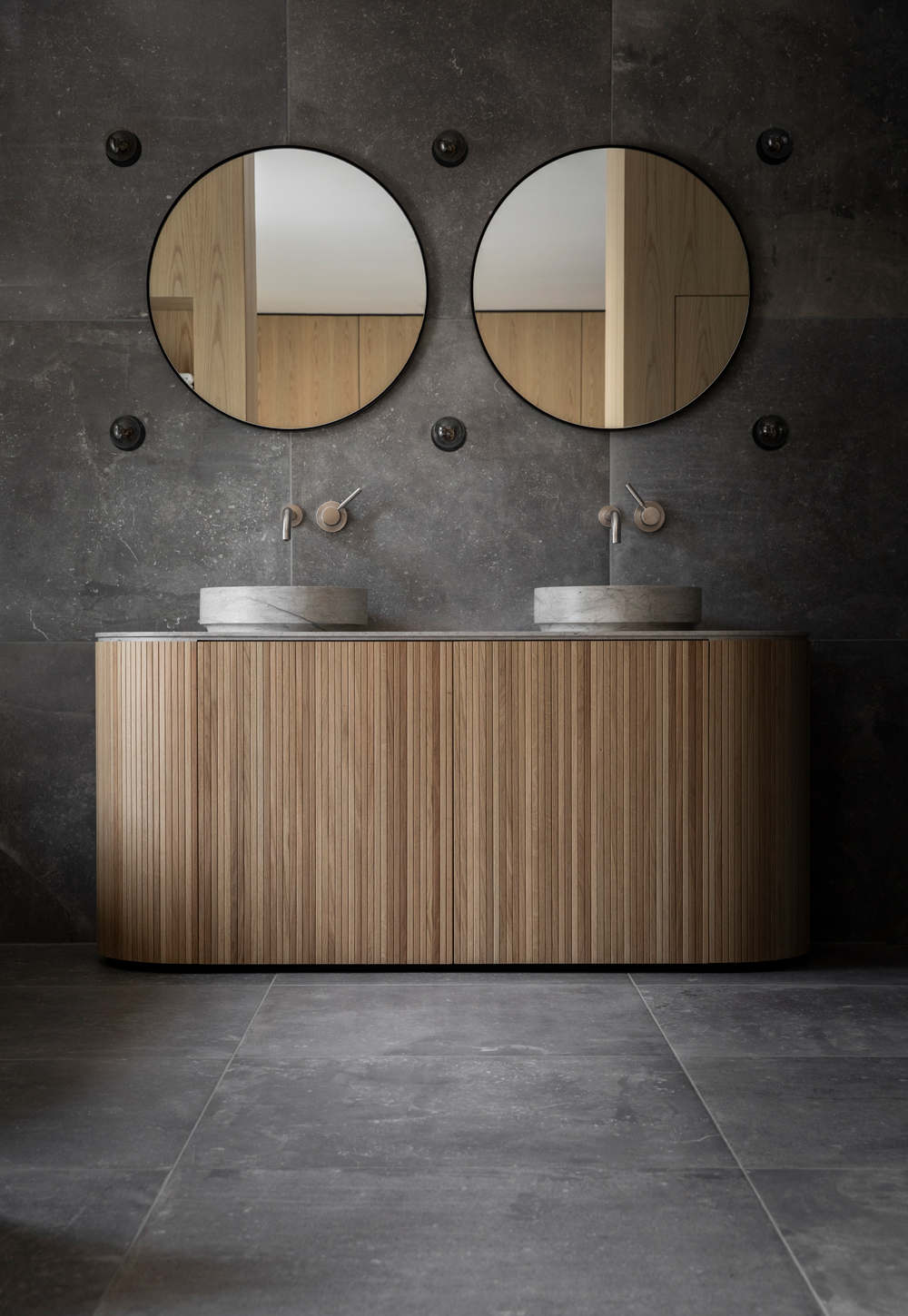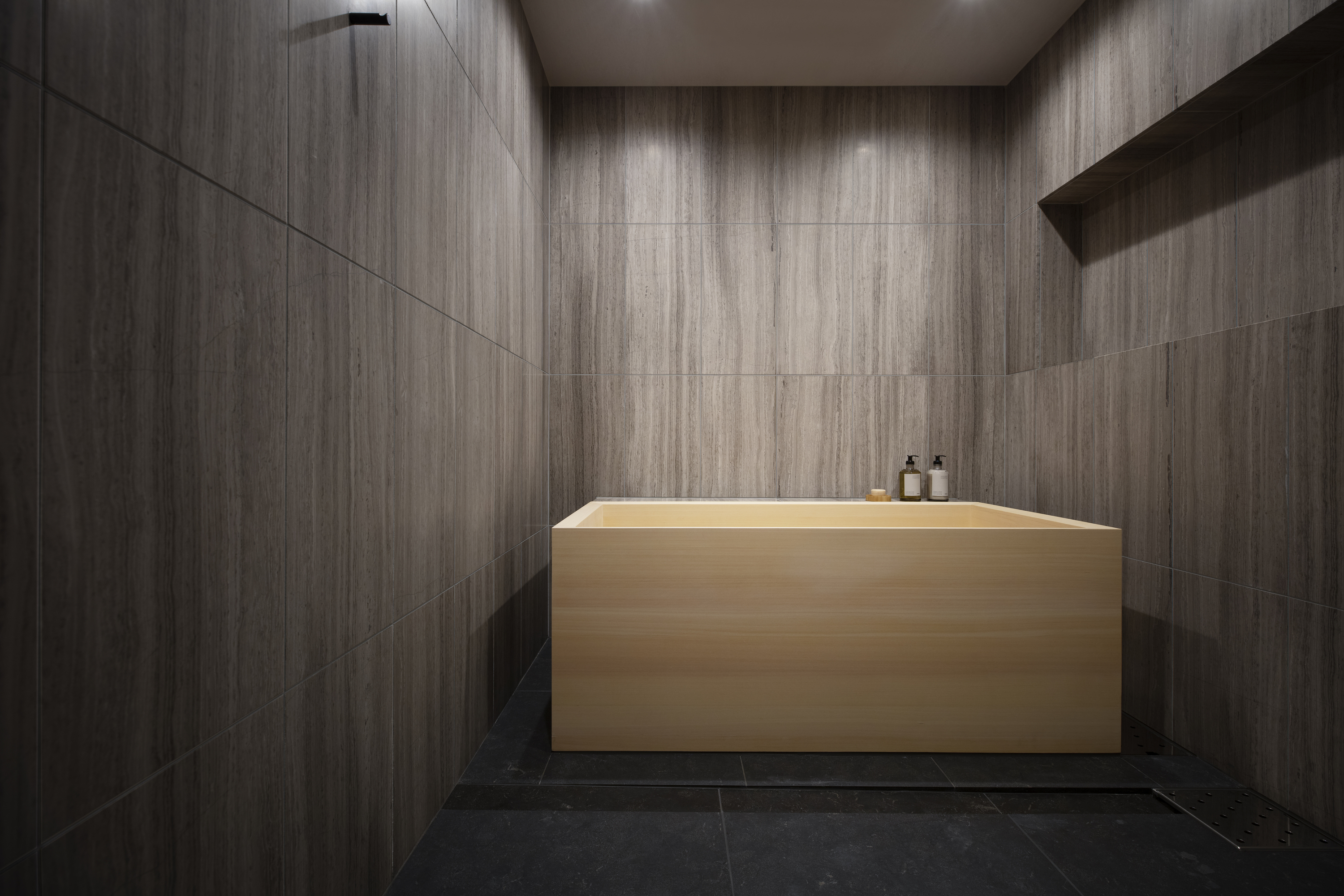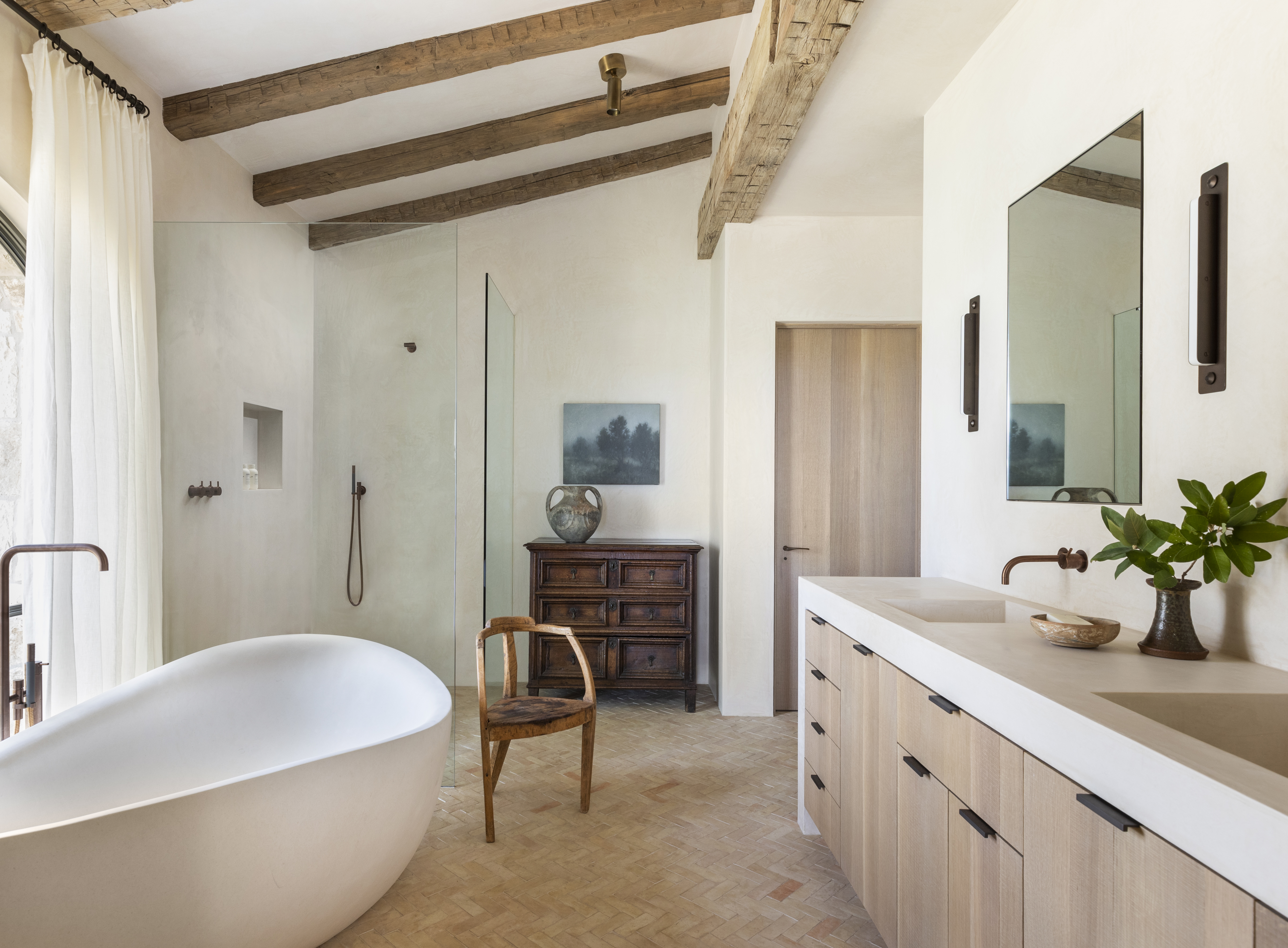
This bathroom trend is the perfect blend of Scandinavian hygge and the Japanese Wabi-Sabi. The result is a simplistic, warm, and restorative space that allows you to take a moment to yourself.
'There is a mutual understanding and respect in both Scandinavia and Japan for the use of natural materials in design and architecture, a fondness of muted color palettes, and a humble approach to expressivity through genuine craftsmanship,' says Jonas Bjerre-Poulsen, partner at Norm Architects. 'Where other design traditions can be sensuous, expressive, and playful, there is a down-to-earth seriousness and thoughtfulness in the Japandi design.'
If you're keen to design a modern bathroom that feels plush yet has the most long-lasting elements and timeless designs, then this trend of Japandi bathrooms is definitely for you. Here are some great ways to create this aesthetic.
1. Consider tactile walls

Subtlety is a cornerstone of the Japandi bathroom trend. This is expressed through muted walls in tactile finishes. Think limewash paint, cement finishes, and even wooden coverings. While Scandinavian designs are all about the cozy feel, the Japanese touch can be brought in through natural materials.
'The entire interior of this home is plaster, so for the bathroom, we wanted to keep that design choice consistent and used Tadelakt Shower Plaster,' says Marie Flanigan, founder of Marie Flanigan Interiors. 'We use this specific plaster in a number of bathrooms as it is waterproof and creates a seamless appearance with its application. The polished surface not only ensures a watertight seal but also feels luxurious and clean, which makes a beautiful finish in the ethereal-feeling space.'
2. Choose minimalist lights

For a spa bathroom feel, keep the bathroom lighting fixtures minimalistic. But this doesn't mean you compromise on quality items. The aim is to create a design aesthetic that focuses on clean lines, yet is functional.
'The Scandinavian and the traditional Japanese design traditions are bound by a shared understanding of embedded qualities of simplicity, functionality, refinement, and attention to detail,' says Jonas Bjerre-Poulsen, partner at Norm Architects.
'Japandi features warm, diffuse light that feels close to candlelight or the light of a lantern,' says Laila Rietbergen of @japandi.interior. 'For the perfect aesthetic, choose fixtures that are preferably dimmable. Of course, every room and space is different but for example, a wall light, a standing light, and a small portable light around the room would be great. Apart from that you can add candles and play with natural light.'
3. Go for organic fixtures

If you're on a mission to design a bathroom with a dreamy bathtub, then a great idea is to purchase or customize one made of natural materials. In a large space like a primary bathroom, consider a large, custom tub that fits snug in a corner for the ultimate relaxing feel.
'We worked closely with a Japanese property developer on the renovation of a luxury condominium apartment of 200 m2 located at the Opus Arisugawa Terrace & Residence in central Tokyo, Japan,' says Anne-Marie Buemann, managing partner at OEO Studio. 'The interiors reflect a cross-pollination of Japanese and Scandinavian design, drawing on inspiration from both cultures and reinterpreting them in new ways to create a discerning and quality-conscious residential home. In this bathroom, a delicate Japanese soaking tub made of Hinoki wood, adds a sensation of purity to the space.'
'In Japandi interiors, all elements have a purpose,' says Laila. 'They all add functional value like a ceramic vase, a wooden shelf, or a table. When possible add some round and organic shapes.'
4. Opt for muted colors

Traditionally, Japandi bathroom colors focus on neutral base tones. Think black or gray, but this style is also accepting of earthy textures, so it's natural to see the inclusion of browns, greens, and beige.
'You can make the space a bit more Scandinavian or Japanese,' says Laila. 'For example, use more muted colors like in Scandinavian design or use darker wood like you see more often in Japanese style. My advice would be to use different shapes, natural materials, and textures for the best palette.'
5. Bring in organic architectural elements

Wood is a classic material to use in any interior, but it’s particularly big in Japandi design. An interesting way to create a wood bathroom is by incorporating the material as exposed beams. This will give the space a feeling of being in the outdoors...the perfect eco bathroom vibe.
'This bathroom was designed to feel a bit primitive and like an extension of the home’s beautiful Texas Hill Country surroundings,' says Marie 'The beams were reclaimed to add character, interest and a feeling of history. The floors were sourced from Chateau Domingue and are unglazed 2” x 6” terracotta tiles laid in a herringbone pattern. The slightly uneven and imperfect texture plays into the beautiful Wabi-Sabi-inspired design.'







